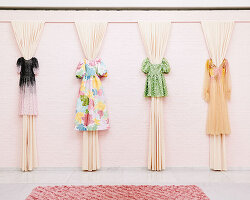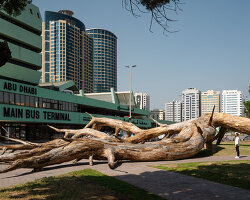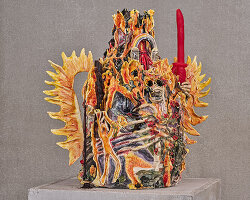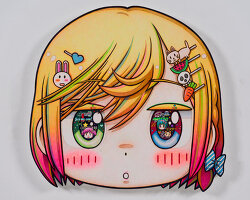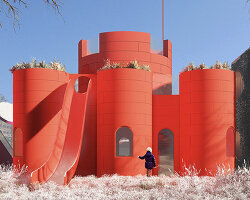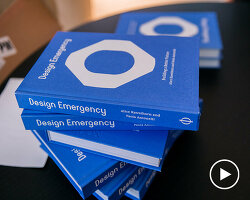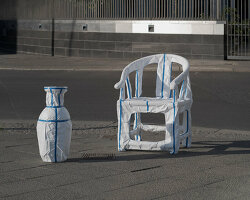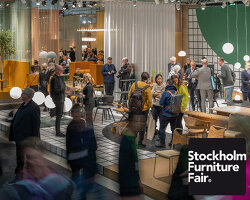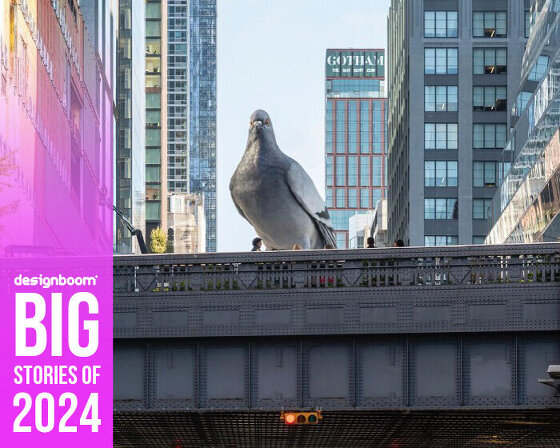while the complex, and often alienating science behind the pandemic has inundated the globe over the past year, artist laura splan dove into the study of virus structures to explore the interconnectedness between cultural and biological systems. ‘a lot of my work plays with different ways of rematerializing the ‘invisible’, whether it’s creating lace designs based on virus structures, or weavings with data driven patterns based on electromyography waveforms,’ splan says in an interview with designboom. ‘my studio process already includes self-study of virology and biomedical imaging, but I’m always looking for opportunities to work directly with scientists and laboratories, and to learn more about the state-of-the-art technology in their labs.’
splan’s recent artistic study began with a special artist residency with integral molecular, a lab that specializes in ‘membrane protein antibody discovery’ — the isolation and manipulation of specific parts of a cell to study the markers of disease and immunity. as an inaugural bioartist in residence, splan took weekly laboratory visits and observed the scientists’ research and technologies, then responded to that experience in her studio. she soon honed her focus in on PyMOL, a software used to map the structure of viruses in order to develop potential vaccines. with an interest in probing the scientific and creative implications of how information is visualized, the artist began experimenting with a model of SARS-CoV-2 protein.
unraveling #4 (raspberry/slate/violet), 2020, digital animation, TRT: 2 minute loops
with a background in 3D modeling and video, splan was immediately drawn to molecular visualization software and its ability to create morphed animations between two protein structures. her research and investigation led her to the creation of ‘unraveling’, a series of animations created with the software and SARS-CoV-2 protein spike protein models that offer mesmerizing meditations on invisible entanglements between natural and constructed worlds. the series includes playful manipulations of ‘conformations’ (folded protein forms), which determine biological function including infectivity. splan used the software’s specialized features in unconventional ways to unravel and morph these forms. meanwhile, a palette of colors — chosen from the software’s own library — references idyllic representations of the natural world, such as blue skies, green forests, ripe fruit and romantic flowers. like much of her work, the artist unearthed poetic connections in otherwise highly technical processes.
designboom spoke with laura splan about rematerializing the ‘invisible’, and creating mesmerizing meditations to momentarily transcend the coronavirus and its devastating effects.
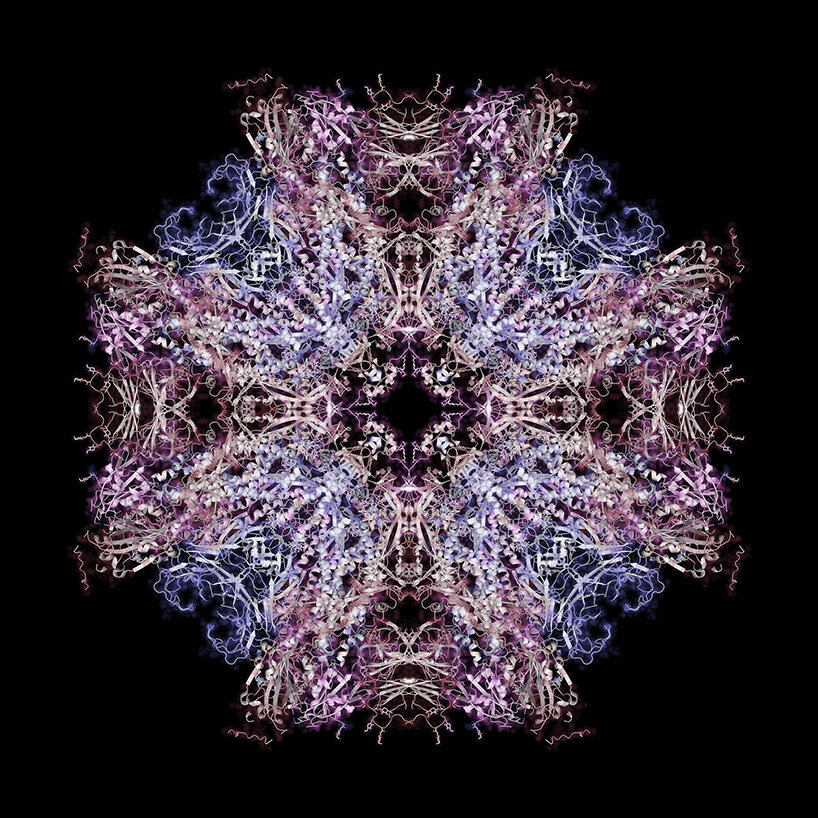
renatured (raspberry/slate/violet), 2020, chromogenic print
designboom (DB): when did you become interested in cultural and biological systems, and what draws you to these themes?
laura splan (LS): as a biological sciences major at the university of california irvine, I was required to take a lot of humanities courses. so, my coursework was a mix of looking through microscopes in classes with titles like the ‘origins of life’ while considering the philosophical implications of mary shelley’s ‘frankenstein’. I became increasingly interested in the latter and changed my major to art. if we are going to talk about biology in the 21st century, we have to talk about technology and the cultural contexts in which they emerge, exist and evolve together.
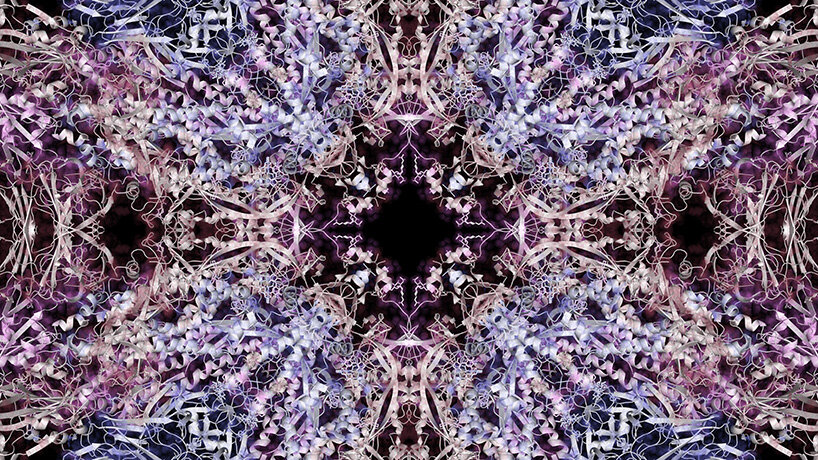
still from unraveling #4 (raspberry/slate/violet), 2020, digital animation, TRT: 2 minute loops
LS (continued): my recent work is focused on interspecies entanglements that often include hidden networks of invisible labor and as well as supply chains of biological products used in genetic engineering. the coronavirus has laid bare the interconnectedness of human behavior and public health as cultural clashes have emerged over the simplest of precautions like wearing a mask to protect oneself and others. we’ve seen how basic disease prevention can be politicized on many fronts including culturally defined notions of gender — think fox nation saying biden ‘might as well carry a purse with that mask.’
unraveling #2 (orange/salmon/oxygen), 2020, digital animation, TRT: 2 minute loops
DB: can you briefly introduce the starting point for the project, and how you became involved with integral molecular? what are the primary aspects of their research?
LS: a lot of my work plays with different ways of rematerializing the ‘invisible’, whether it’s creating lace designs based on virus structures or weavings with data driven patterns based on electromyography waveforms. so my studio process already includes self-study of virology and biomedical imaging. but I’m always looking for opportunities to work directly with scientists and laboratories, and to learn more about the state-of-the-art technology in their labs.
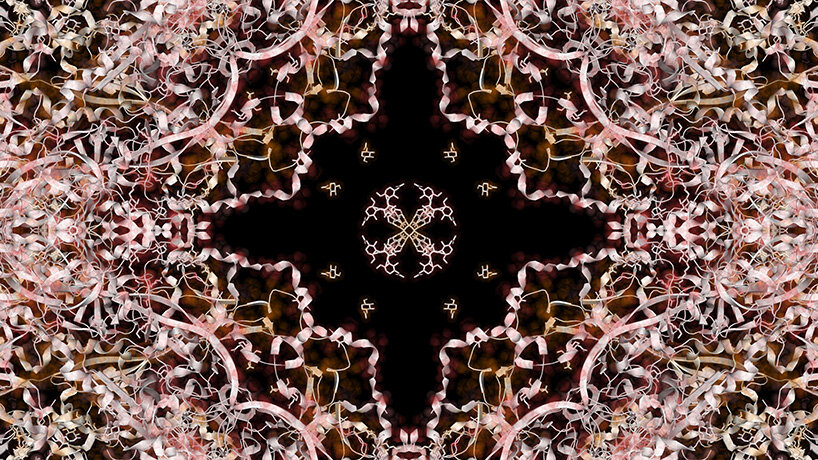
still from unraveling #2 (orange/salmon/oxygen), 2020, digital animation, TRT: 2 minute loops
LS (continued): in 2018, I was selected as an inaugural bioartist in residence at the science center in philadelphia. the core of this residency is a partnership with integral molecular, a biotech lab that specializes in antibody discovery and provides vaccine development services to pharmaceutical companies. during my weekly visits to the lab, I was introduced to many tools and techniques including molecular visualization software that scientists use to study structural models of proteins. with a background in 3D modeling and video, I was immediately enamored of this software and pretty quickly went down a rabbit hole with its abilities to create morphed animations between two protein structures. I also discovered a feature called ‘sculpting’ that I use to unravel protein structures in order to create ‘unfolded’ variations for my molecular animations.
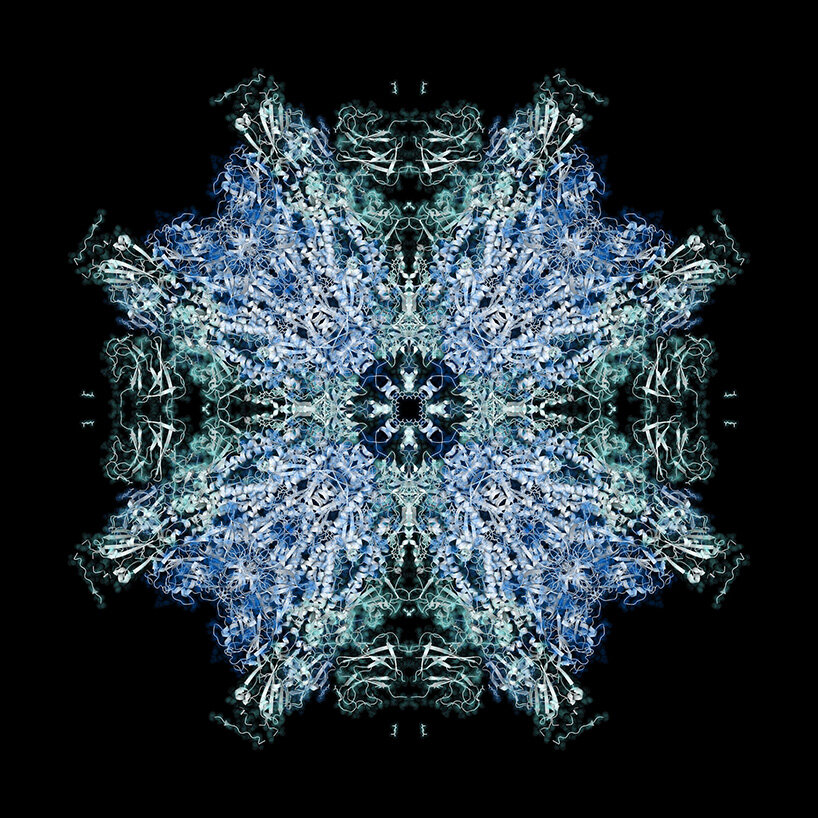
renatured (marine/aquamarine/skyblue), 2020, chromogenic print
DB: what fascinated you about their research and technologies, and how did you respond to your experience at the lab in your studio?
LS: part of their research involves using non-human species to produce antibodies that can be engineered or cloned in the lab. I was fascinated to learn how many different types of animals were used (chickens, horses, llamas, alpacas) to produce antibodies for human vaccines. so, I began to create animations with molecular models inspired by these interspecies entanglements. my most recent animation commissioned for the bruges triennial was created with models of coronavirus spike proteins, llama nanobodies and human cell receptors.
unraveling #1 (marine/aquamarine/skyblue), 2020, digital animation, TRT: 2 minute loops
DB: how have the digital animations in the ‘unraveling’ series been created? what software has been used?
LS: last spring, as the world was reeling from the pandemic, I was compelled to return to the animations I had started during my residency where I was unraveling protein structures. I wanted to create something with the ‘materiality’ of the virus while also providing some sort of meditative experience for the viewer that might momentarily transcended the virus and its devastating effects.
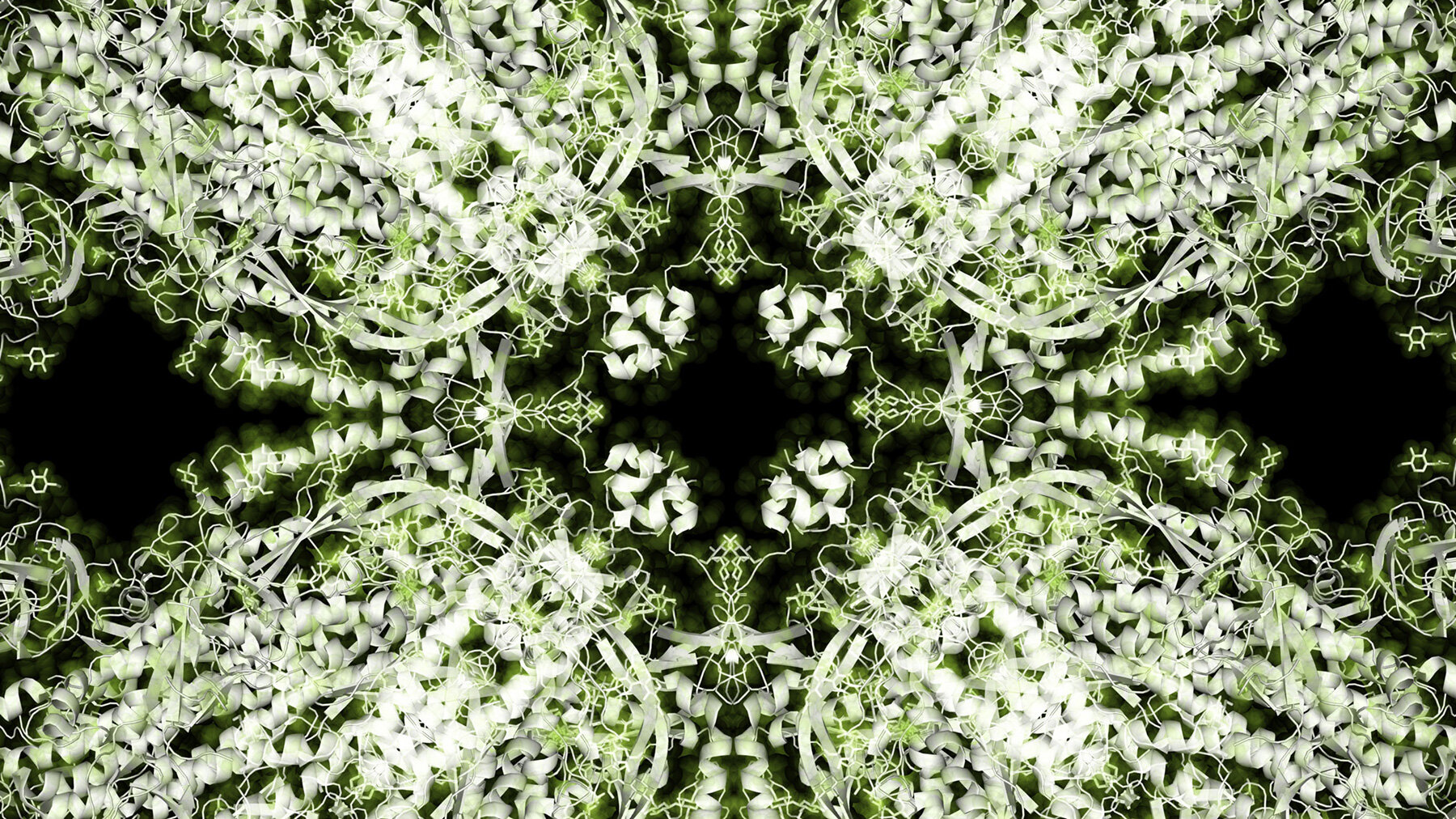
still from unraveling #3 (lime/limon/forest), digital animation, TRT: 2 minute loops
LS (continued): the particular process for creating ‘unraveling’ came from many months of tinkering until I arrived at a result that was both aesthetically and conceptually compelling. I begin my animations in PyMOL by unraveling folded protein structures. I then create morphed animations with these folded and unfolded forms. next I manipulate the molecular representations with colors chosen from the program’s palette. the final step is using adobe after effects to create various kaleidoscopic configurations. the result is a paradoxically mesmerizing meditation that provides a temporary solace from the trauma of the pandemic, made out of the materiality of the coronavirus itself (or at least a scientifically modeled abstraction of it). these intersections of abstraction and intimacy are what are so fascinating to me!
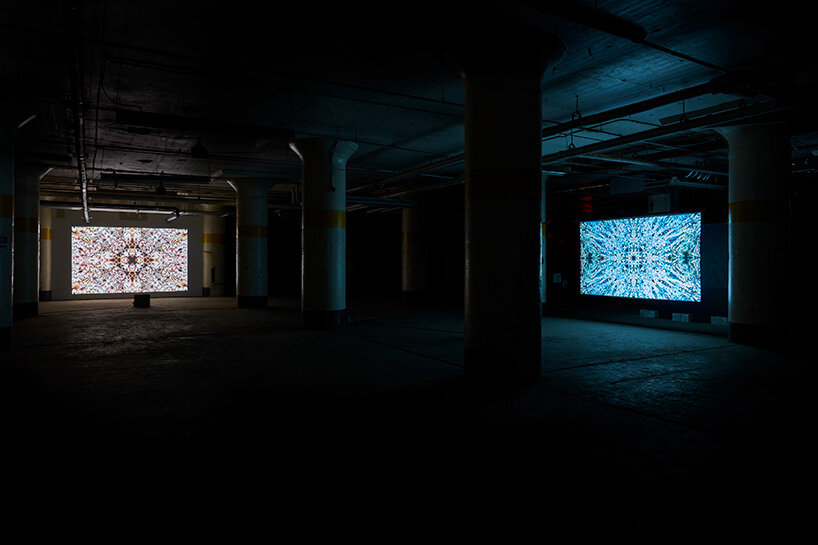
installation view of unraveling, 2021, BioBAT art space
DB: in your visits to the integral molecular laboratory, what was the most interesting, or surprising, thing that you’ve learned?
LS: one of the things I’m always preoccupied with is the language used to communicate science. metaphors and analogies are pervasive, and they function to provide both greater simplification and further abstraction.
I was particularly intrigued by the palette of colors available in the molecular visualization software, especially since most of the structures I was looking at are smaller than visible wavelengths and therefore have no color. so, the mere act of adding color is another layer of translation and fabrication. the names of the colors were also curious to me. the software’s palette includes references to nature that are entangled with idyllic representations of the natural world such as blue skies, green forests, ripe fruit and romantic flowers. they present additional levels of abstraction, ones that are built into the interfaces of the technologies we use to engage with and manipulate the natural world.
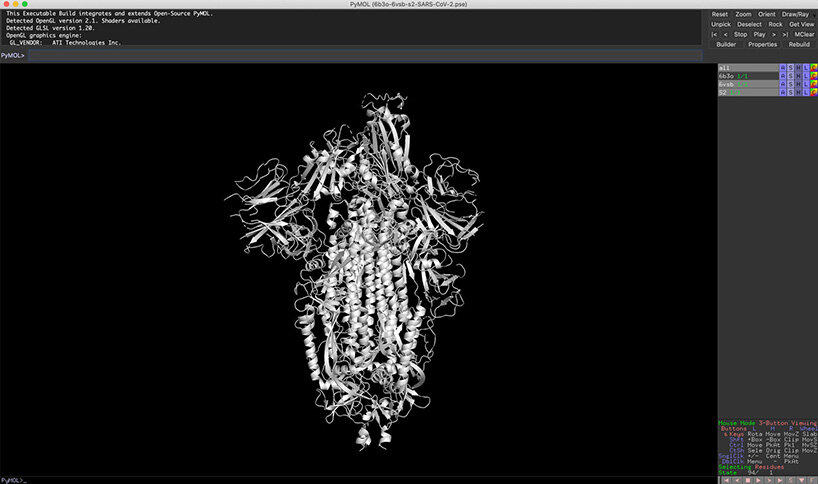
SARS-CoV-2 spike protein model, molecular modeling animation work in progress, 2020
DB: what do you think, in turn, the team at integral molecular might have learned from you from a creative standpoint?
LS: the scientists were really intrigued by how their research could be explored and even communicated in different ways and by how every facet of their research (language, software) could be considered as art making ‘material’. while experimenting with my molecular animations, I demonstrated the software’s ‘sculpting’ feature to one of the scientists at the lab who began using it in his own research, allowing him to visualize structures in new ways. but I think it’s unproductive, and even stifling, to look for these transactional exchanges between art and science when the real magic is found where you least expect it. we need only look to alexander fleming’s accidental discovery of penicillin on which he mused ‘one sometimes finds what one is not looking for.’
denatured #1 (SARS-CoV-2 spike protein RBD with fab and nanobody)
DB: what do you find beautiful about the integration of art and science? can art help make complex scientific topics more approachable?
LS: to me, the beauty of the integration of art and science is not in art’s ability to simplify the complexity of science but rather in how it can complicate what we think science and even nature are, by revealing how each is circumscribed by culture. while scientists are in the laboratory redefining what the origins of life can be, artists are interrogating the poetic and philosophical implications of how its definitions get formed, evolved and even policed.
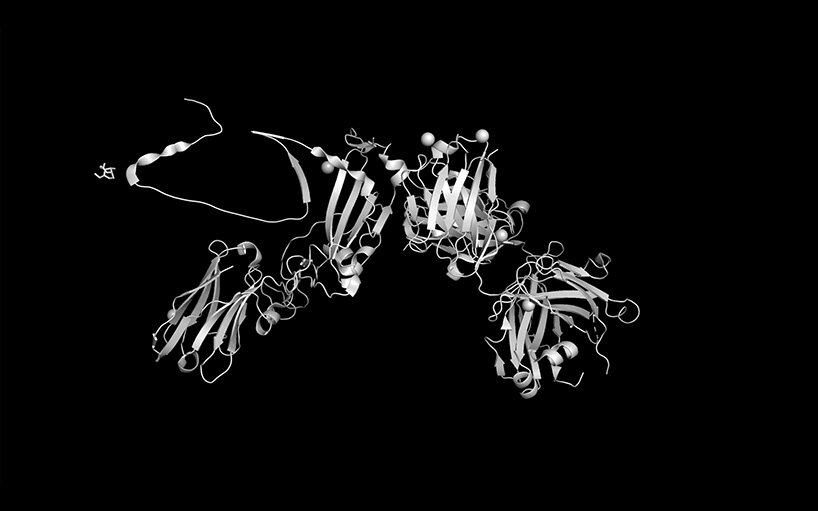
still — model of folded protein disrupted with molecular ‘sculpting’ tool
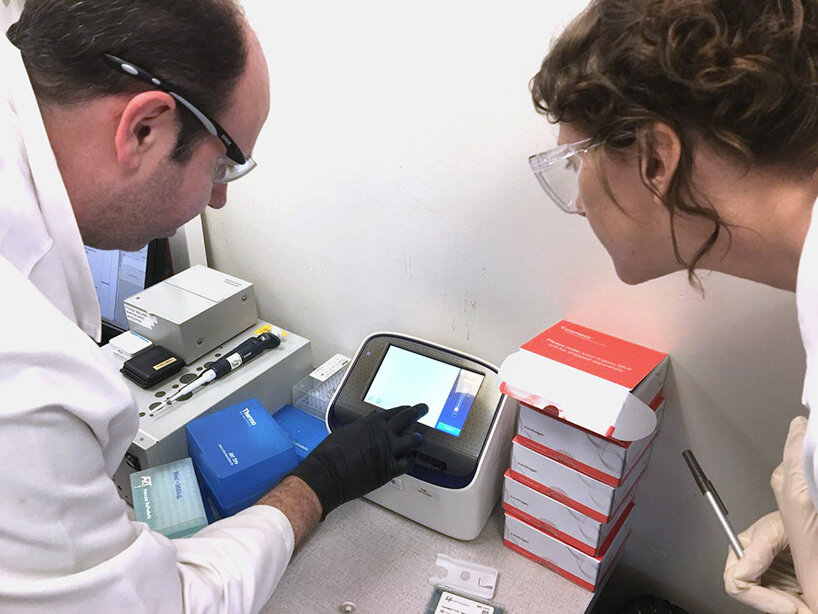
laura splan with a scientist at integral molecular, image courtesy of uCity science center
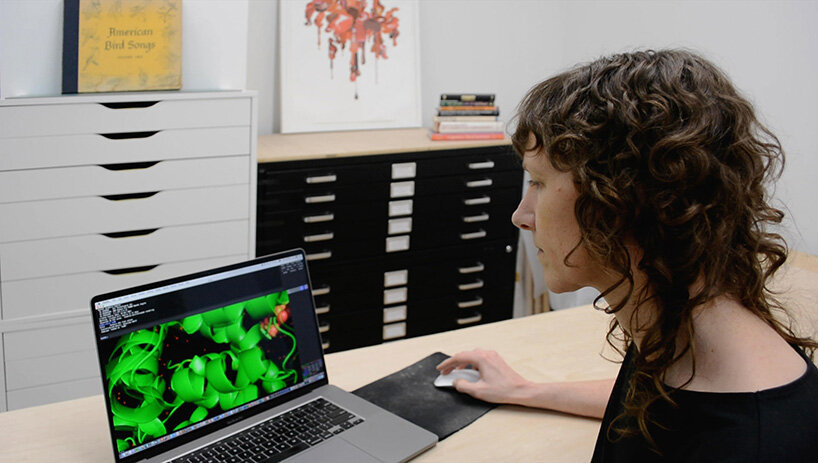
laura splan working on animations at her studio, image courtesy of the artist
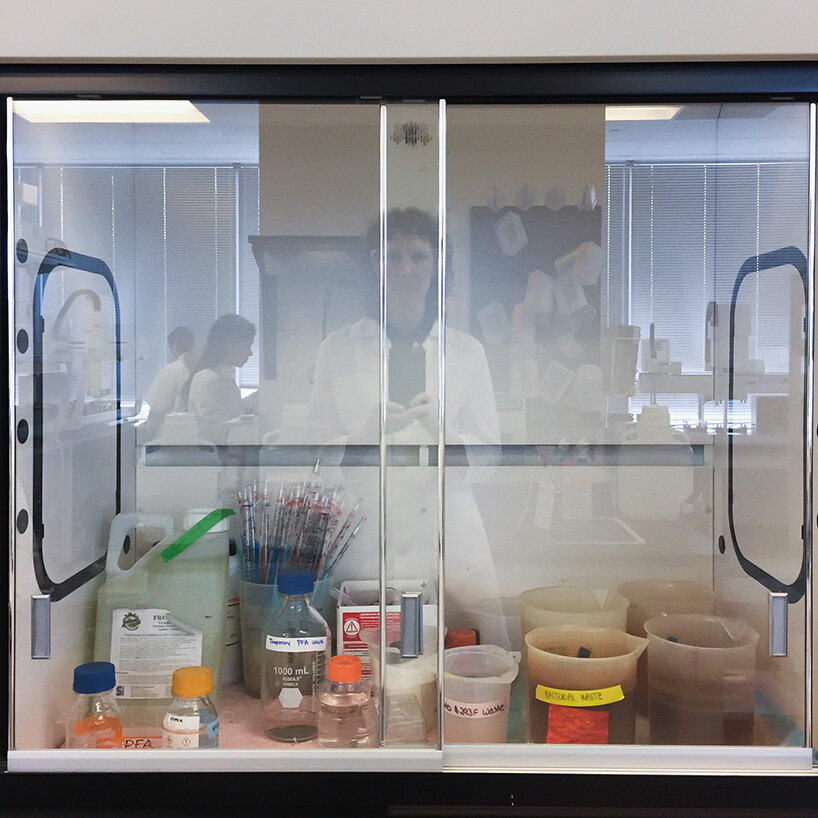
laura splan, self portrait at integral molecular
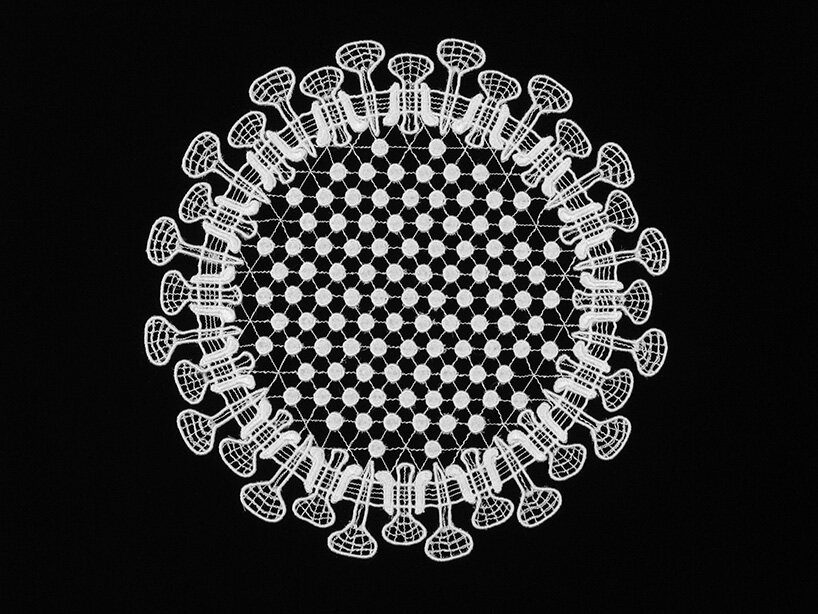
splan’s 2004 series, doilies, examined the lace doily as domestic artifact that traditionally references motifs from nature. the design of each doily in the series has been based on a different enveloped virus structure (SARS, HIV, herpes, influenza, hepadna)
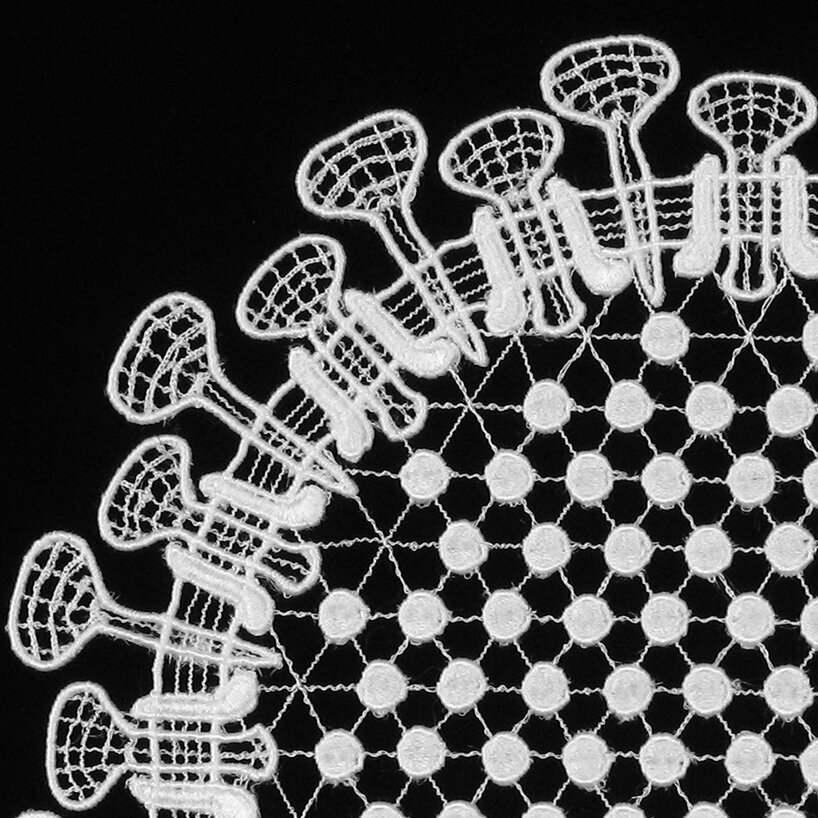
doilies (SARS), 2004 — detail
art interviews (161)
coronavirus (COVID-19) (319)
PRODUCT LIBRARY
a diverse digital database that acts as a valuable guide in gaining insight and information about a product directly from the manufacturer, and serves as a rich reference point in developing a project or scheme.
